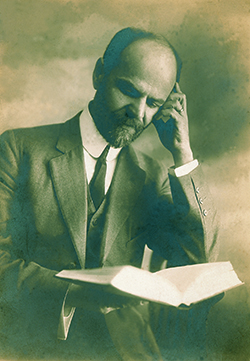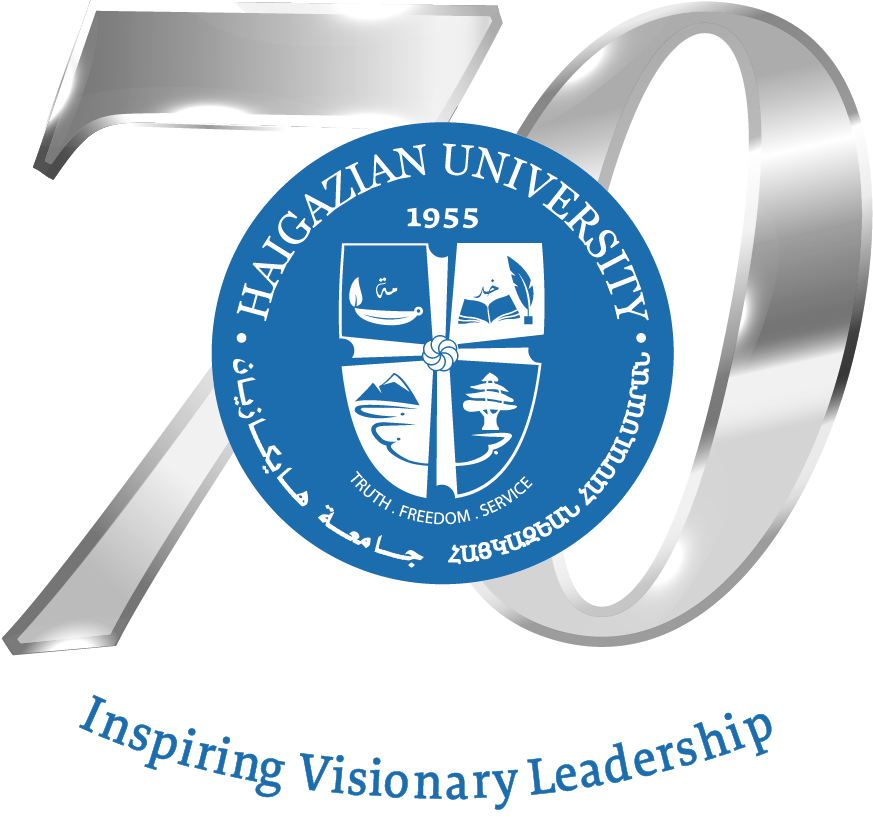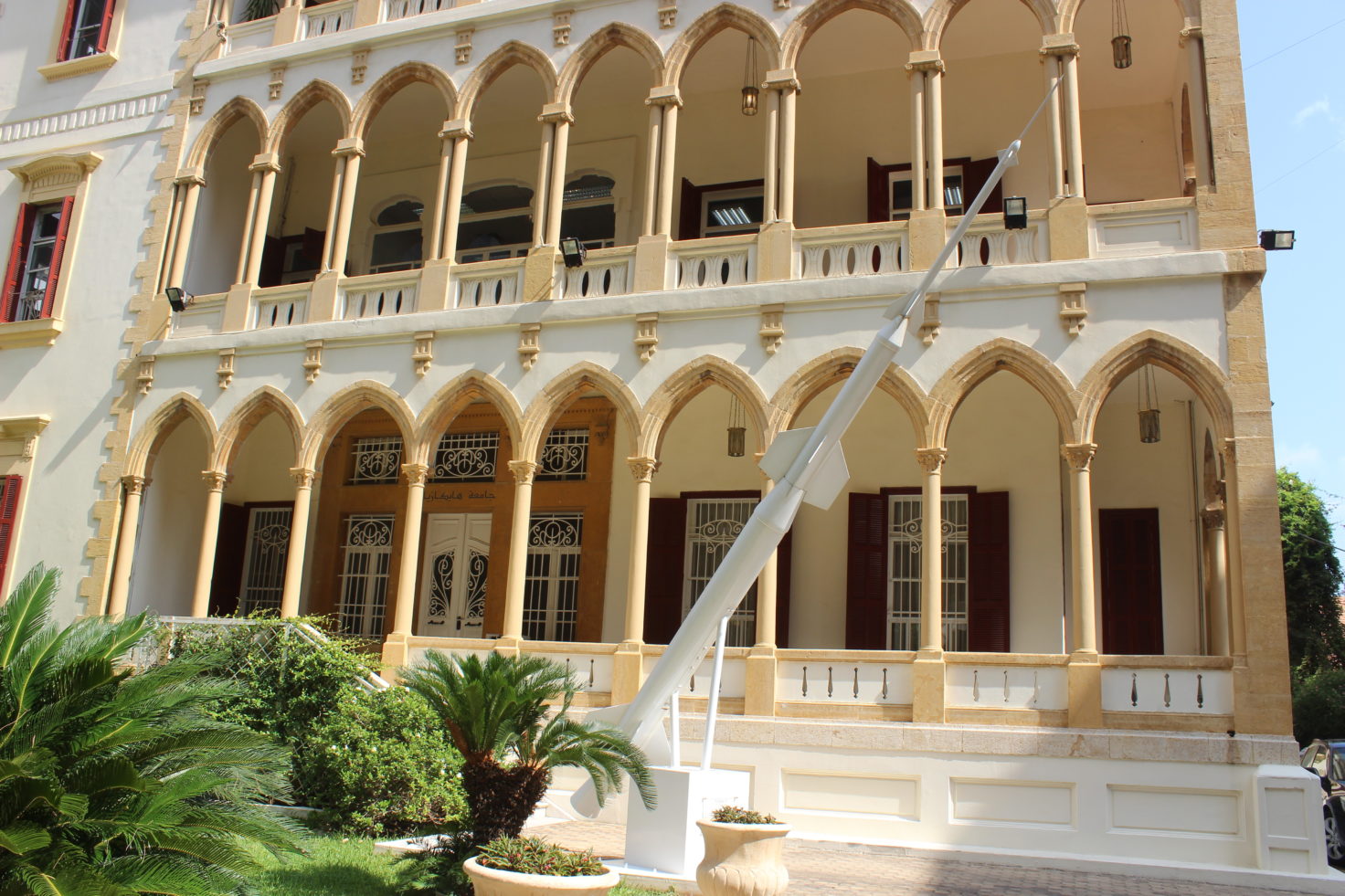He earned a scholarship for doctoral study at Yale Divinity School. He received the Ph.D. degree from the Graduate School of Yale University in 1898 at the age of 28 after a two-year study in Semitic Languages and Biblical Literature. His thesis is entitled “The Text of Zephaniah”.
For a short period after graduation, he studied music and harmony at the University of Toronto. In 1899, he went back to Chicago where he received ministerial ordination at the University Congregational Church. That same year he returned to Turkey and joined the faculty of the Apostolic Institute in Konia – also known as Jenanyan College (founded in 1892) as academic Dean. He was appointed Director of the Institute and later promoted to the Presidency until his death. Through his efforts, the standard of the Institute was raised to that of a college and was later incorporated as the Apostolic College. In 1907, the Board of Trustees obtained incorporation for the Apostolic Institute under the laws of the State of New York, for educational and missionary work in the Levant. Based on missionary records, the Institute was managed entirely by Armenians.

Dr. Armenag Haigazian
During 1913-1914, he spent thirteen months in the US raising funds for new buildings for the Institute. While there, he participated in the Second World’s Christian Citizenship Conference held in Portland, Oregon, June 29 to July 6, 1913. The conference, under the auspices of the National Reform Association, hosted speakers from each of the principal countries of the world. Men eminent in political life and in the legal profession, experts in reform work, ecclesiastics high in their respective churches, authors and educators contributed their share to the notable success of the meetings. Among them was Dr. Haigazian, a delegate from Turkey, who delivered the address, “Christian Forces in the Levant” during the July 3 schedule of the conference.
He returned to Konia in 1914, two days before WWI was officially declared. The Institute was closed in 1915, following the mass deportation of the Armenian population from Konia at the start of the Armenian Genocide. On May 9 of that year, Dr. Haigazian and his family were exiled from Konia and survived the atrocities committed by the Ottoman Empire, returning after several weeks. Upon the insistence of parents the Institute reopened in September 1919 with three hundred students enrolled.
Dr. Haigazian married Matilda Surpouhi Garabedian (1879-1968) on July 14, 1902. She was the daughter of prominent Armenian Evangelical pastor Rev. Dikran Lazarus Garabedian and Anna Kaprielian. They had six daughters, Mary (1903-2002), Daisy (1905-1987), Lily (1907-1970), Nelly (1909-2006), Pansy (1911-2010) and Arminé (1917-2002). On February 18, 1920, before the Kemalist government came into power in Turkey, Dr. Haigazian sent his wife and three daughters, Nelly, Pansy and Arminé to Constantinople. For the sake of their safety and education, his wife, along with five of their daughters, departed for New York and arrived on February 28, 1921.
Dr. Haigazian was arrested by Kemalist forces on May 22, 1921 during Sunday school and sent off to Harpoot on May 31. When he arrived in Harpoot on June 20, he was already near collapse. He had contracted typhus while being deported with a group of influential Armenians and Greeks. On June 23rd he was sent to the quarantine camp. After the government delayed his admission to the hospital, his health deteriorated dramatically. Eventually, they granted permission to admit him to the American Hospital in Mezereh on June 29. He died there on Thursday, July 7, 1921. The funeral took place in the Armenian Evangelical Church in Harpoot and he was buried in the church cemetery.
Years later, with a donation of 25,000 USD by his daughter Mary and son-in-law Avak (Steven) Mehagian and with the help of Stephen Philibosian, Haigazian College was founded on October 17, 1955, by the Union of Armenian Evangelical Churches in the Near East (UAECNE) and the Armenian Missionary Association of America (AMAA) as an American-style liberal arts college to assist in the preparation of teachers and pastors. The College was named in his honor, in recognition of his contributions to Armenian education.
Prior to 1955, the Armenian Evangelical community of Beirut, to complement its high schools and the Teacher Training needs, had established two post-secondary educational programs: the Teacher’s Training Institute, which was housed in the library of the Central High School and operated from 1948-51, and the Armenian Evangelical College, which held a Freshman Arts and Sciences program under the sponsorship of the First Armenian Evangelical Church of Beirut. These two entities merged in 1951 forming a Freshman Arts and Sciences plus a Sophomore Arts program, and they continued to serve the Armenian Community until 1955, when Haigazian College was established. Haigazian College was originally designed to function as a junior college offering two years of university-level education. However, a demand for upper-division classes encouraged the institution to develop four year programs.
Haigazian operated under its original name of “College” until 1991. In keeping with Near Eastern nomenclature, the name was changed to Haigazian University College in 1992. On December 28, 1996, the Ministry of Culture and Higher Education of Lebanon issued decree number 9657, which authorized the institution to change its name to Haigazian University.
Dr. John Markarian, the first president of the University, served until June 1966. During the years 1967 to 1971, Dr. Gilbert Bilezikian held this position; then Dr. Markarian returned to the post until his retirement in June 1982. Subsequently, the presidency was held by Dr. Verne H. Fletcher until February 1985. Miss Wilma Cholakian, the administrative dean, was then responsible for the operation of the University until August 30, 1995. Dr. John Khanjian served as president from September 1, 1995, until August 1, 2002. On September 1, 2002, Rev. Dr. Paul Haidostian became president.
When the University opened in 1955, there were 43 students enrolled. Student enrollment reached 650 before the start of the civil disturbances in Lebanon in 1975. The present enrollment is approximately 600 with a faculty and staff of 160. So far, the university has granted the Bachelor of Arts, Bachelor of Business Administration, Bachelor of Science, Master of Arts, and Master of Business Administration degrees in various fields to around 4,500 students.
The university was first located in the Webb Building, residence of American Missionary Elizabeth Webb, a ten-room house converted for college use.
Later, a seven-story building was added. This building was called the Mehagian Academic Center in honor of Mr. and Mrs. A. S. Mehagian, whose financial support made its construction possible. A grant from Mr. Stephen P. Mugar of Boston, MA enabled the university to acquire a beautiful historic structure, a sample of the Lebanese architectural heritage, subsequently named the Mugar Building, to honor the donor’s parents.
In 1987, due to the Lebanese war, the University moved to the Christian Medical Center in the Ashrafieh district, and classes continued as usual. On March 27, 1996, the Board of Managers decided that the University should return to its original campus on Rue Mexique, Kantari. On February 16, 1997, the renovation of the former campus began. On October 6, 1997, classes resumed in the renovated and revitalized Kantari campus to the delight of students and the community at large.
Early in July 2001, began the construction of a fourth building on the Mugar property which has a media center, a board room, and faculty offices. This new facility became operational in October 2001.
To accommodate the growth of the student body, in August 2004, a new piece of property was purchased on the May Ziadeh Street (parallel to Mexique Street on which the University operates). The plot includes a 6-floor Heritage Building which now hosts seminar rooms, administrative and academic sections. The Heritage Building, which enriches the cultural identity of the neighborhood, was inaugurated on April 9, 2010.
Click here to read HU’s history by past President John Khanjian
Click here to read about the Stephen Philibosian Foundation.



